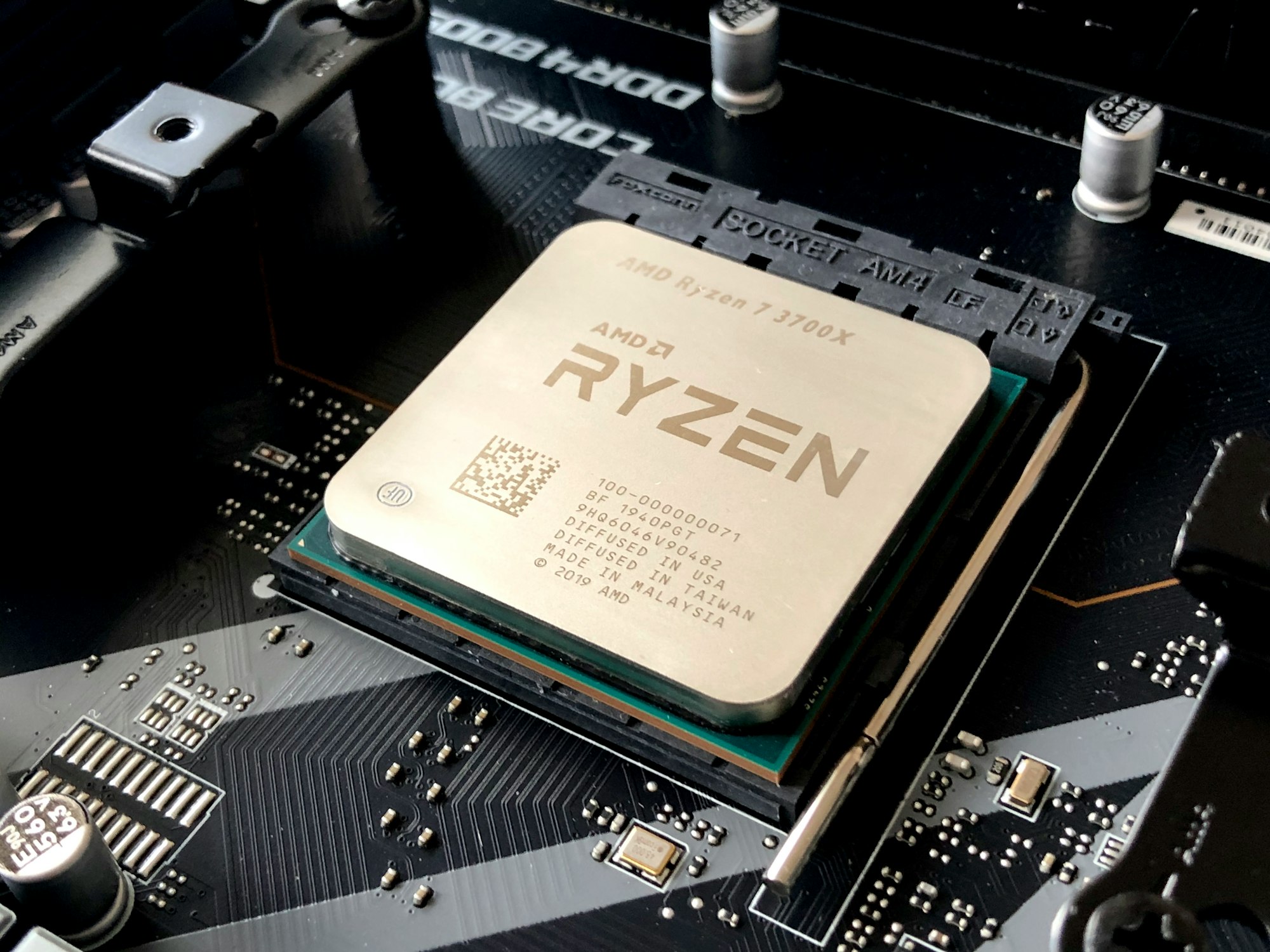What is Generative AI? Everything about it
This article provides an overview of generative AI, a rapidly growing subfield of artificial intelligence that enables machines to create original content. The post covers the basics of generative AI, its applications in various fields such as art and literature, and its impact on society.

Generative AI, also known as creative AI, is an exciting subfield of artificial intelligence that allows machines to generate new and original content, such as images, music, and text, without direct human input. This technology has been advancing rapidly in recent years thanks to advancements in deep learning, natural language processing, and computer vision.
From generating life-like images to writing compelling stories, generative AI is revolutionizing how we think about creativity and human-machine interactions. In this blog post, we will delve into the fundamentals of generative AI and explore some of its most fascinating applications.
How does it work?
Generative AI uses algorithms and models to learn from large datasets of existing content and generate new content similar in style or format. These algorithms are typically based on deep-learning neural networks designed to simulate how the human brain processes information.
One of the most common generative AI models is the Generative Adversarial Network (GAN), which consists of two neural networks: a generator and a discriminator. The generator creates new content by generating data from random noise, while the discriminator evaluates the generated content and provides feedback to the generator on how to improve its output.
Another type of generative AI is the Variational Autoencoder (VAE), which learns to encode and decode images or other data, allowing it to generate new content similar to the original dataset.
In addition to these models, language models, such as GPT (Generative Pre-trained Transformer), can generate natural language text by predicting the next word in a sequence based on the context and patterns in the training data.
Generative AI analyzes large datasets and uses complex algorithms to generate new content similar in style or format to the original data, allowing machines to create unique and original content without direct human input.
How does the model help?
In the context of generative AI, models refer to the algorithms and architectures used to generate new content. These models are built using deep learning neural networks, designed to learn from large datasets and generate new data similar to the original.
Models help generative AI in several ways. First, they provide a framework for learning from large datasets and generating new content similar to the original. This allows machines to create new and original content without explicit human input, saving time and resources.
Second, models can be customized to generate specific types of content, such as images, music, or text, based on the data type the model is trained on. For example, a model that is trained on images of faces can be used to generate new faces that are similar in appearance to the original dataset.
Third, models can be fine-tuned to improve their output based on user feedback or other sources. This can help refine the output of generative AI and ensure its high quality and accuracy.
Models are a critical component of generative AI, providing the framework and algorithms needed to generate new and original content similar in style or format to the original dataset. As technology advances, we can expect to see new and more advanced models being developed that enable even greater creativity and innovation.
ChatGPT, DALL-E, and Bard
They are all generative AI models that have gained widespread attention and recognition for their innovative capabilities.
ChatGPT is a language model developed by OpenAI that can generate natural language text, such as responses to user queries or conversations. It is based on the Transformer architecture and is pre-trained on large datasets of text, allowing it to generate new text that is coherent and grammatically correct.
DALL-E is a generative AI model developed by OpenAI that can generate images from textual descriptions. It is based on the GAN architecture and is trained on a dataset of images and corresponding textual descriptions, allowing it to generate new images based on the input text.
Bard is a generative AI model developed by OpenAI that can write original poetry based on user prompts. It is trained on a large dataset of poetry and uses a neural network to generate new verses similar in style and format to the original dataset.
These models represent some of the most innovative and advanced examples of generative AI, demonstrating the potential for machines to create new and original content similar in style or format to the original dataset. As technology advances, we can expect to see even more sophisticated and impressive applications of generative AI in a wide range of fields.
What about Google?
Yes, Google has developed several generative AI models, including some of the most well-known ones in the field. For example, Google has developed BERT (Bidirectional Encoder Representations from Transformers). This language model has been widely used for natural languages processing tasks, such as question-answering and translation.
Google has also developed several generative AI models for creative applications, such as Magenta, a platform for creating music and art using machine learning algorithms. In addition, Google's DeepMind has developed several generative models for generating new content, such as WaveNet, a deep neural network that can generate realistic speech and music.
Microsoft & openAI
It's important to note that while Microsoft has invested in OpenAI and is using its technology on Bing, Google is still one of the leaders in the field of generative AI and has made significant contributions to the development of this technology. In addition, Google's research in the field of AI is widely recognized and respected in academic and research communities.
Is Google lagging behind Microsoft?
While Microsoft's investment in OpenAI is certainly significant, it's inaccurate to say that Google is lagging in generative AI. Both companies are making significant investments in AI research and development, and we expect to see continued advancements in the field from both companies in the coming years.

Use Case
Generative AI has many impressive use cases across various industries, including art, design, music, and literature; few examples:
Art
One of generative AI's most impressive use cases is its ability to create art. For example, the ArtBreeder platform uses GANs to generate new and unique images based on user input, allowing artists to create new art pieces inspired by existing works.
Design
Generative AI is also used to create new and innovative products. For example, the Autodesk Dreamcatcher platform uses generative design algorithms to generate optimized designs for products such as airplane parts and furniture.
Music
Another impressive use case of generative AI is its ability to create music. The Google Magenta platform uses neural networks to generate new and original pieces of music based on user input, allowing musicians to create new compositions that are inspired by existing works.
Literature
Generative AI is also being used to create new and original pieces of literature. For example, the OpenAI GPT-3 language model can generate coherent and grammatically correct text, allowing it to write articles, stories, and poetry.
Healthcare
Generative AI is also used to generate new drugs and treatments. For example, the Insilico Medicine platform uses generative AI to design new molecules that can be used to develop new drugs and therapies.
Generative AI has the potential to revolutionize how we think about creativity and innovation, and these impressive use cases demonstrate just a few of the many applications of this technology. As technology advances, we expect to see even more impressive use cases emerging in various industries.
Use Case by Industry
Generative AI has numerous applications across various industries, including finance, legal, film, retail, manufacturing, and more. Here are some specific examples of how generative AI is being used in these industries:
Finance
Generative AI generates forecasts and predictions based on historical data. For example, generative AI models can predict stock prices or market trends, allowing traders to make more informed investment decisions.
Legal
In the legal industry, generative AI is being used to generate contracts and other legal documents. For example, generative AI models can generate customized contracts based on user input, saving time and resources for legal teams.
Film
Generative AI is used in the film industry to generate special effects and computer-generated imagery (CGI). For example, generative AI models can generate realistic images of imaginary creatures or generate backgrounds and environments for film scenes.
Retail
Generative AI is used in retail to generate personalized customer recommendations. For example, generative AI models can analyze customer data and generate personalized product recommendations, increasing customer engagement and sales.
Manufacturing
Generative AI is used in manufacturing to generate optimized product designs. For example, generative AI models can generate optimized designs for products such as airplane parts and furniture, reducing costs and improving efficiency.
Benefits
Generative AI has numerous benefits that make it a valuable technology in a variety of fields; some of the key benefits:
Creativity
One of the main benefits of generative AI is that it can generate new and original content similar in style or format to the original dataset. This enables machines to create new and innovative content without explicit human input, allowing for increased creativity and innovation.
Efficiency
Generative AI can help to save time and resources by automating tasks that would otherwise require human input. For example, generative AI can be used to generate product designs, write articles, or create music, allowing for increased efficiency and productivity.
Personalization
Generative AI can create personalized content based on user input or preferences. For example, a generative AI system could generate personalized music playlists or suggest products based on a user's search history.
Quality
Generative AI can help improve content quality by using algorithms to refine and optimize output. For example, a generative AI system could be trained to generate high-quality images or write grammatically correct text.
Innovation
Generative AI can generate new and original ideas that would not have been possible with human input alone. This can lead to discoveries, inventions, and products potentially transforming entire industries.
The benefits of generative AI are significant, and this technology has the potential to revolutionize how we think about creativity, efficiency, and innovation. As technology advances, we can expect to see even more impressive applications of generative AI in a wide range of industries.
Limitation
While generative AI has many benefits, this technology has several limitations; some of the key limitations:
Data bias
Generative AI models are only as good as the data they are trained on, which can lead to bias in the generated content. If the training data is not diverse enough, the generative AI model may not be able to generate content that accurately reflects the full range of possibilities.
Lack of control
Generative AI models can be unpredictable and difficult to control, which can be a challenge in certain applications. For example, if a generative AI model generates art or music, the output may not always be predictable or controllable.
Quality control
Generative AI models can generate a large content volume, but not all may be high quality or relevant to the task. This can make it difficult to ensure that the model's output is sufficient for real-world applications.
Computational resources
Generative AI models require significant computational resources, including high-performance computing and large amounts of memory. This can make it difficult to scale generative AI applications to larger datasets or real-world scenarios.
Legal and ethical issues
Using generative AI can raise legal and ethical concerns around intellectual property rights, privacy, and bias in decision-making.
While generative AI has many benefits, it is important to know its limitations and challenges when applying this technology in real-world applications. By understanding these limitations and working to address them, we can ensure that generative AI is used responsibly and effectively.
Concerns & Risks
One of the major concerns associated with generative AI is the potential for misuse and security risks. Here are some of the key concerns:
Deepfakes
Generative AI can be used to create deep fakes, digitally manipulated videos or images that can be used to spread false information or defame individuals. Deepfakes can be challenging to detect and can have severe consequences for individuals and society as a whole.
Photo by Markus Spiske / Unsplash
Privacy
Generative AI can generate highly realistic images or videos of individuals without consent, which can violate privacy. This technology can be used for malicious purposes, such as revenge porn or identity theft.
Bias and discrimination
Generative AI models can perpetuate bias and discrimination if trained on biased data or if algorithms are biased. This can have severe consequences for individuals and communities that are negatively impacted by this bias.
Security risks
Generative AI models can be vulnerable to hacking or cyber-attacks. If a generative AI model is compromised, it could be used to generate malicious content or gain unauthorized access to sensitive information.
Regulation
To ensure that generative AI is used responsibly and ethically, a number of legal and ethical issues raised by its use may demand additional laws and regulations.
These concerns highlight the need for responsible use of generative AI and the importance of addressing these issues to ensure that this technology is used in a way that benefits society. By addressing these concerns, we can ensure that generative AI is used responsibly and effectively, promoting innovation and progress while minimizing the risks associated with this technology.

Differnce between Generative AI and AI
Yes, there is a difference between generative AI and AI.
AI, or artificial intelligence, is a broad field of computer science encompassing a wide range of techniques and approaches for enabling machines to perform tasks that typically require human intelligence. AI can be further divided into several subfields, such as machine learning, natural language processing, and computer vision.
Generative AI, on the other hand, is a specific subfield of AI that focuses on creating new and original content using machine learning algorithms. Generative AI models are designed to learn from large datasets and generate new data similar in style or format to the original. This can include images, music, text, or other types of content.
While generative AI is a specific type, it is essential to note that not all AI systems are generative. For example, a machine learning algorithm used to classify images or detect objects is not generative, as it is not creating new content.
While generative AI and AI are part of the broader field of artificial intelligence, they represent distinct approaches to using machines to perform intelligent tasks.
History
The history of generative AI dates back to the early days of artificial intelligence research when early pioneers such as John McCarthy and Marvin Minsky explored ways to enable machines to perform intelligent tasks. One of the earliest examples of generative AI was the Logic Theorist, a program developed by Allen Newell and Herbert Simon in the late 1950s that could generate mathematical proofs.
In the 1960s and 1970s, researchers continued to explore generative AI techniques, developing systems that could generate natural language text and music. However, these early systems were limited in their capabilities and could not generate high-quality content.
In the 1990s, researchers made significant advancements in generative AI by developing neural networks, which enabled machines to learn from large datasets and generate new content. This led to the development of a range of generative AI models, including GANs, which were introduced in 2014 and quickly gained widespread attention for their ability to generate realistic images and videos.
Generative AI is a rapidly growing field with many applications in art, design, music, and literature. As technology advances, we can expect to see even more impressive and innovative applications of generative AI in the future.
Conclusion
Generative AI is a powerful and rapidly evolving technology with numerous benefits and applications across various industries. However, as with any new technology, concerns and potential risks are associated with its use, such as creating deep fakes and security risks.
As quantum computing continues to advance, it has the potential to revolutionize the field of AI by enabling more powerful and efficient data processing. However, it is essential to note that this technology is still in its early stages of development, and significant technical challenges need to be addressed before it can be used in practical applications.
In conclusion, while generative AI can transform how we think about creativity, efficiency, and innovation, it is important to use this technology responsibly and address the concerns and risks associated with its use. As technology continues to advance and new developments emerge, it will be important to monitor these developments and ensure that generative AI is used to benefit society as a whole while minimizing potential risks and issues.
Photo by Olivier Collet / Unsplash





